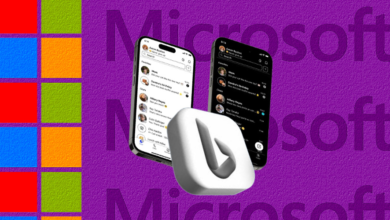
In today’s rapidly evolving digital landscape, the education sector stands on the precipice of a profound transformation thanks to the dynamic influence of software development. As technology continues to advance at an unprecedented pace, its integration into educational practices and systems has the potential to revolutionize how we teach and learn. From streamlining administrative tasks to creating immersive learning experiences, software development is poised to play a pivotal role in reshaping the future of education.
The fusion of software development and education promises to bridge gaps, enhance accessibility, and redefine traditional classroom boundaries. In this exploration, we will delve into the myriad ways in which software development is reshaping the educational landscape, from the development of cutting-edge learning management systems to the creation of interactive educational apps that engage students in unprecedented ways. Join us on this journey as we uncover the transformative power of software development in education and the limitless possibilities it offers for learners, educators, and institutions alike.
The Traditional Education Landscape
The traditional education landscape, before the integration of software and digital technologies, relied heavily on conventional methods of teaching and learning. In this era, education was primarily classroom-based, and textbooks were the primary source of information. Here are some key aspects of the traditional education landscape:
Classroom-Centric Approach
Traditional education was centered around physical classrooms where teachers delivered lectures, wrote on chalkboards, and students took notes. Face-to-face interaction between teachers and students was the core of the learning process.
Printed Textbooks
Textbooks were the primary learning materials. Students carried heavy backpacks filled with textbooks covering various subjects. These books contained the knowledge required for the curriculum and were often the sole resource for learning.
Limited Interactivity
In the traditional setting, interactivity and engagement were limited. Students predominantly listened to lectures, and there were fewer opportunities for active participation and hands-on learning.
Standardized Assessments
Assessment methods mostly revolved around standardized tests and exams. Students were evaluated based on their performance in written exams, quizzes, and assignments.
Fixed Learning Pace
In the traditional classroom, the pace of learning was uniform for all students. Teachers had to follow a set curriculum, and students were expected to keep up with the class regardless of their learning speed.
Limited Access to Resources
Access to educational resources beyond textbooks was restricted. Students relied on libraries and physical materials for research, which often posed limitations on the depth and breadth of their studies.
While the traditional education system had its merits, it also had shortcomings, particularly in accommodating diverse learning styles and individual needs. The emergence of software development in education has brought about significant changes, making education more adaptive, engaging, and accessible.
Read More: The Future of Chatbots and AI in Healthcare Software Development
The Role of Software Development in Education
Software development has stepped in as a catalyst for change in education. Educational software, ranging from interactive apps to learning management systems, has revolutionized the way students access and consume information. These digital tools enable educators to create engaging content, monitor student progress, and foster a more interactive learning environment.
Benefits of Incorporating Software in Education
Personalized Learning
One of the most significant advantages of educational software is its ability to personalize learning experiences. With adaptive algorithms, students receive tailored content and exercises based on their strengths and weaknesses, enhancing comprehension and retention.
Accessibility and Inclusivity
Educational software breaks down geographical barriers, making quality education accessible to students worldwide. Additionally, it aids differently-abled individuals by offering features like text-to-speech and subtitles.
Gamification in Education
Gamification elements in educational software make learning fun and engaging. Students can earn rewards, compete with peers, and complete quests, turning education into an exciting adventure.
Data-Driven Decision Making
Educators can leverage data collected by educational software to track student progress, identify areas of improvement, and tailor teaching strategies accordingly, leading to more effective instruction.
Online Learning Platforms
Online platforms provide a flexible and convenient way to learn, allowing students to access resources, participate in discussions, and submit assignments from anywhere with an internet connection.
Challenges and Concerns
While software development in education offers numerous benefits, it also comes with its set of challenges and concerns. Privacy issues, the digital divide, and the need for continuous training for educators are some of the hurdles to overcome.
Innovations in Educational Software
The world of educational software is constantly evolving. Artificial intelligence, virtual reality, and augmented reality are among the innovations that promise to revolutionize how students engage with content.
Personalized Learning with Technology
Imagine a classroom where each student receives a curriculum tailored to their needs and learning pace. With the assistance of educational software, this is now a reality, fostering a more efficient and enjoyable learning journey.
Accessibility and Inclusivity
Education should be inclusive, regardless of physical or cognitive differences. Educational software empowers students with disabilities by providing tools and features that cater to their unique needs.
Gamification in Education
Gamification has the power to transform dull subjects into exciting adventures. By incorporating game-like elements into educational software, students are motivated to learn while having fun.
Data-Driven Decision Making
Data analytics in education allows educators to make informed decisions. By analyzing student performance data, they can tailor their teaching methods to maximize learning outcomes.
Online Learning Platforms
Online platforms have disrupted the traditional classroom setting. Whether it’s remote learning, MOOCs (Massive Open Online Courses), or hybrid models, these platforms provide flexible options for students of all ages.
Blended Learning Models
The blend of traditional classroom teaching and online resources creates a hybrid learning model that caters to diverse learning styles. This approach fosters a more engaging and effective educational experience.
Preparing Educators for the Digital Era
Educators must adapt to the digital age. Professional development programs and training sessions are essential to equip teachers with the skills needed to effectively integrate educational software into their classrooms.
Future Prospects of Software Development in Education
As technology continues to advance, the potential for software development in education is limitless. We can anticipate more sophisticated AI-driven tutoring systems, immersive virtual classrooms, and enhanced collaboration tools that will reshape the educational landscape.
Read More: How to use Software to Improve your Productivity.
Conclusion
In conclusion, the marriage of software development and the education sector has ushered in a transformative era. The traditional methods of teaching and learning, which were once confined to physical classrooms and textbooks, have evolved into a dynamic, digital landscape. This evolution has brought forth a myriad of benefits, including personalized learning experiences, enhanced accessibility, and the gamification of education.
Educational software has empowered both students and educators, providing tools and platforms that cater to individual needs and diverse learning styles. Through data-driven decision-making, teachers can tailor their instructional strategies, leading to improved learning outcomes and student engagement. Online learning platforms have broken down geographical barriers, enabling global access to quality education.
As we look ahead, the prospects of software development in education are incredibly promising. Artificial intelligence, virtual reality, and augmented reality are poised to revolutionize the way we teach and learn, offering immersive and interactive educational experiences. The possibilities are limitless, promising a more inclusive and dynamic educational system.
In this ever-evolving landscape, educators, policymakers, and software developers must work collaboratively to harness the full potential of technology in education. By doing so, we can create a brighter, more accessible, and equitable future for learners of all ages and backgrounds.
FAQs
How does educational software benefit students with disabilities?
Educational software offers features like text-to-speech and subtitles, making learning accessible to differently-abled individuals.
What are the challenges of integrating software into education?
Challenges include privacy concerns, the digital divide, and the need for continuous educator training.
How can data-driven decision-making improve education?
Educators can use data analytics to track student progress and tailor teaching methods for better learning outcomes.
What are some future trends in educational software?
Future trends include AI-driven tutoring systems, virtual classrooms, and enhanced collaboration tools.
How can educators prepare for the digital era?
Educators should undergo professional development and training to effectively integrate educational software into their teaching methods.












One Comment